Introduction
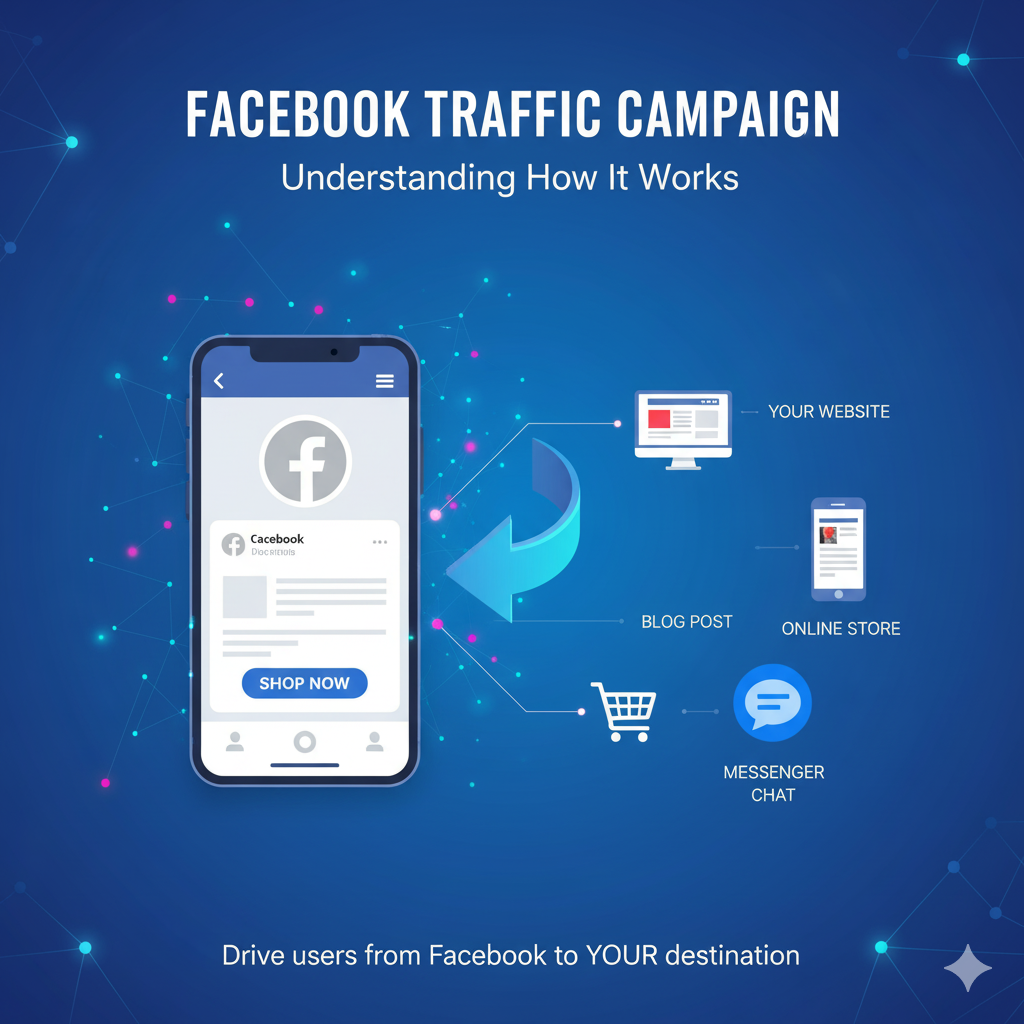
A Facebook Traffic Campaign is one of the most widely used advertising objectives in Meta Ads Manager. Its primary goal is simple — to drive people to a specific destination, such as your website, blog, landing page, app, or Messenger chat.
Whether you want users to read a blog, explore your online store, or visit a landing page, the traffic campaign helps attract visitors who are most likely to click on your link.
Let’s explore how Facebook Traffic Campaigns work, their benefits, setup process, and optimization tips to help you achieve the best results for your brand or business.
1. What Is a Facebook Traffic Campaign?
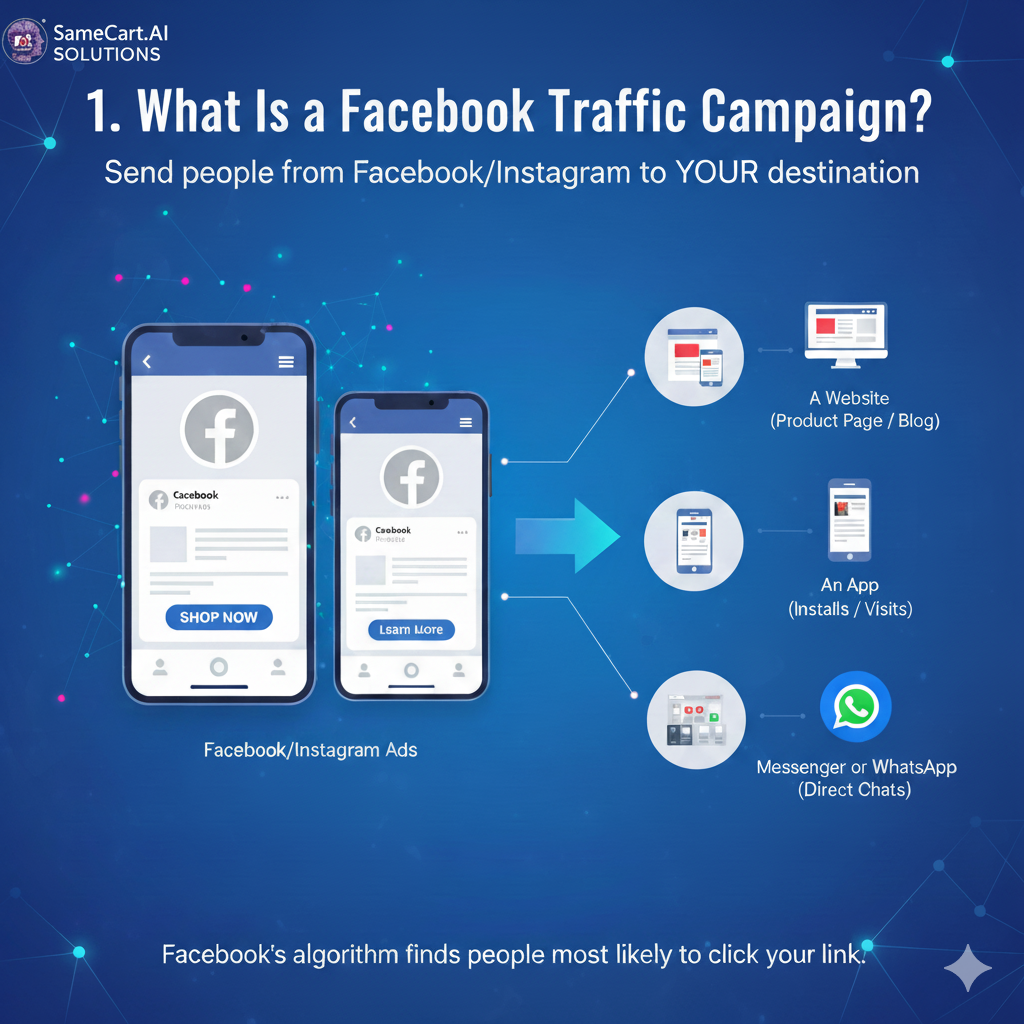
A Traffic Campaign focuses on sending people from Facebook or Instagram to your chosen destination.
When you create this campaign, Facebook’s algorithm automatically shows your ad to people most likely to click links based on their past online behavior.
You can send traffic to:
- A Website (e.g., product page or blog post)
- An App (to encourage installs or visits)
- Messenger or WhatsApp (to start direct chats with customers)
2. Objective of Traffic Campaigns
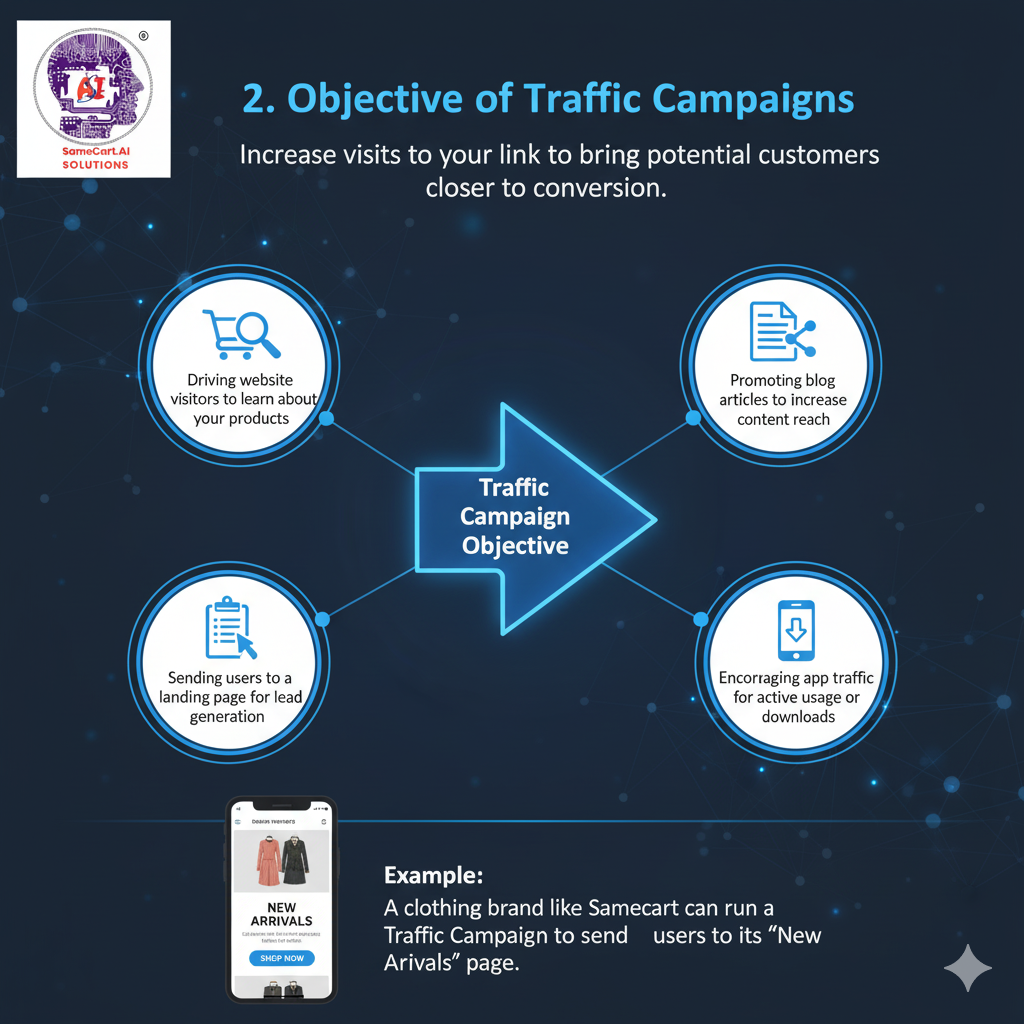
The main objective of this campaign is to increase visits to your link or page — not necessarily to make a sale, but to bring potential customers closer to conversion.
It’s perfect for:
- Driving website visitors to learn about your products.
- Promoting blog articles to increase content reach.
- Sending users to a landing page for lead generation.
- Encouraging app traffic for active usage or downloads.
Example:
A clothing brand like Samecart can run a Traffic Campaign to send users to its “New Arrivals” page, where they can explore the latest designs before deciding to buy.
3. How Facebook Traffic Campaigns Work
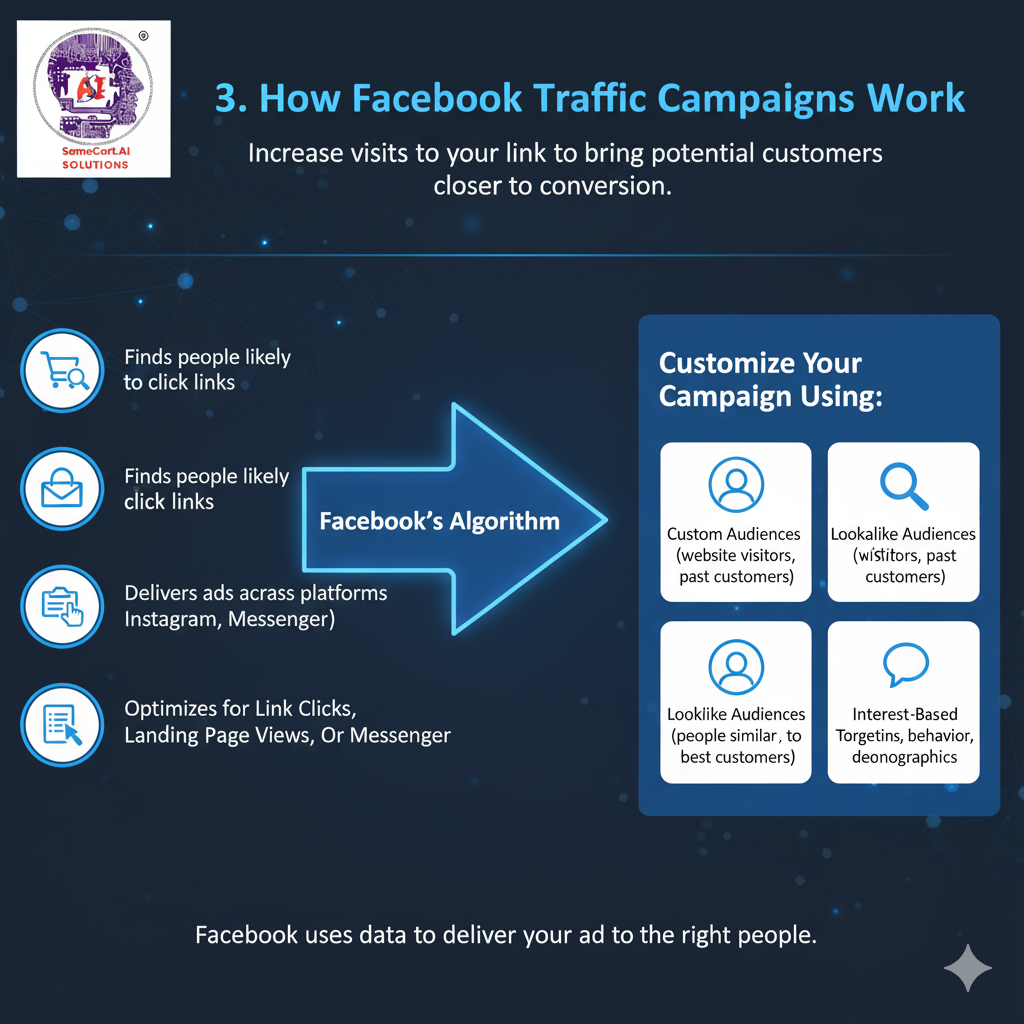
When you choose the Traffic objective, Facebook uses its data and algorithm to:
- Find people who are most likely to click links.
- Deliver your ad to them across Facebook, Instagram, Messenger, or Audience Network.
- Optimize delivery based on your selected goal — Link Clicks, Landing Page Views, or Messenger Visits.
You can further customize your campaign using:
- Custom Audiences (your website visitors or past customers)
- Lookalike Audiences (people similar to your best customers)
- Interest-Based Targeting (based on hobbies, behavior, or demographics)
4. Key Components of a Facebook Traffic Campaign
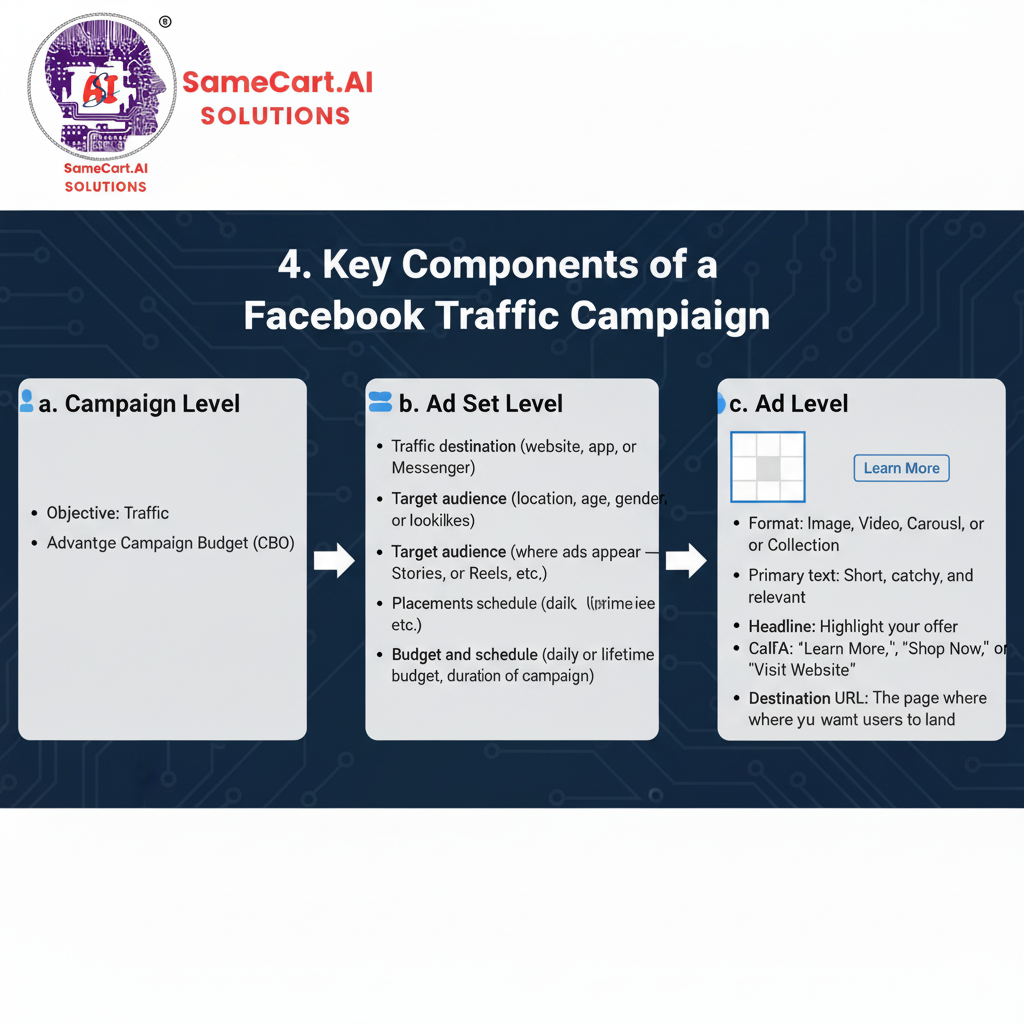
a. Campaign Level
At this level, you define your objective (Traffic) and enable Advantage Campaign Budget (CBO) if you want Meta to automatically manage your budget between ad sets.
b. Ad Set Level
This is where you control:
- Traffic destination (website, app, or Messenger)
- Target audience (location, age, gender, interests, or lookalikes)
- Placements (where ads appear — Feed, Stories, Reels, etc.)
- Budget and schedule (daily or lifetime budget, duration of campaign)
- Optimization goal (Link Clicks or Landing Page Views)
c. Ad Level
This is the creative part of your campaign. You choose:
- Format: Image, Video, Carousel, or Collection
- Primary text: Short, catchy, and relevant
- Headline: Highlight your offer or benefit
- Call-to-Action (CTA): “Learn More,” “Shop Now,” or “Visit Website”
- Destination URL: The page where you want users to land
5. Benefits of Running a Traffic Campaign
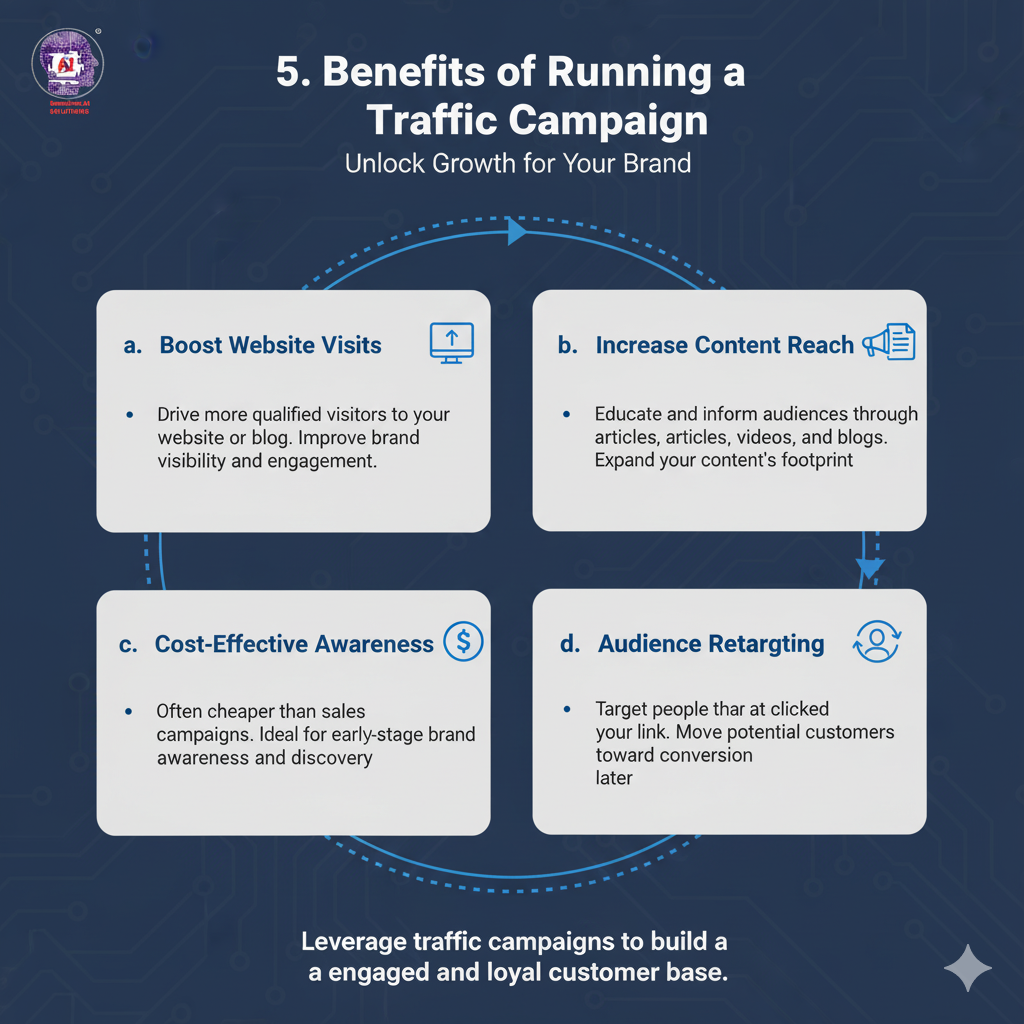
a. Boost Website Visits
It helps drive more qualified visitors to your website or blog — improving brand visibility and engagement.
b. Increase Content Reach
Perfect for brands that want to educate or inform audiences through articles, videos, or blogs.
c. Cost-Effective Awareness
Compared to sales campaigns, traffic campaigns are often cheaper and ideal for early-stage brand awareness.
d. Audience Retargeting
You can retarget people who clicked your link using Custom Audiences to move them toward conversion later.
6. Common Mistakes to Avoid
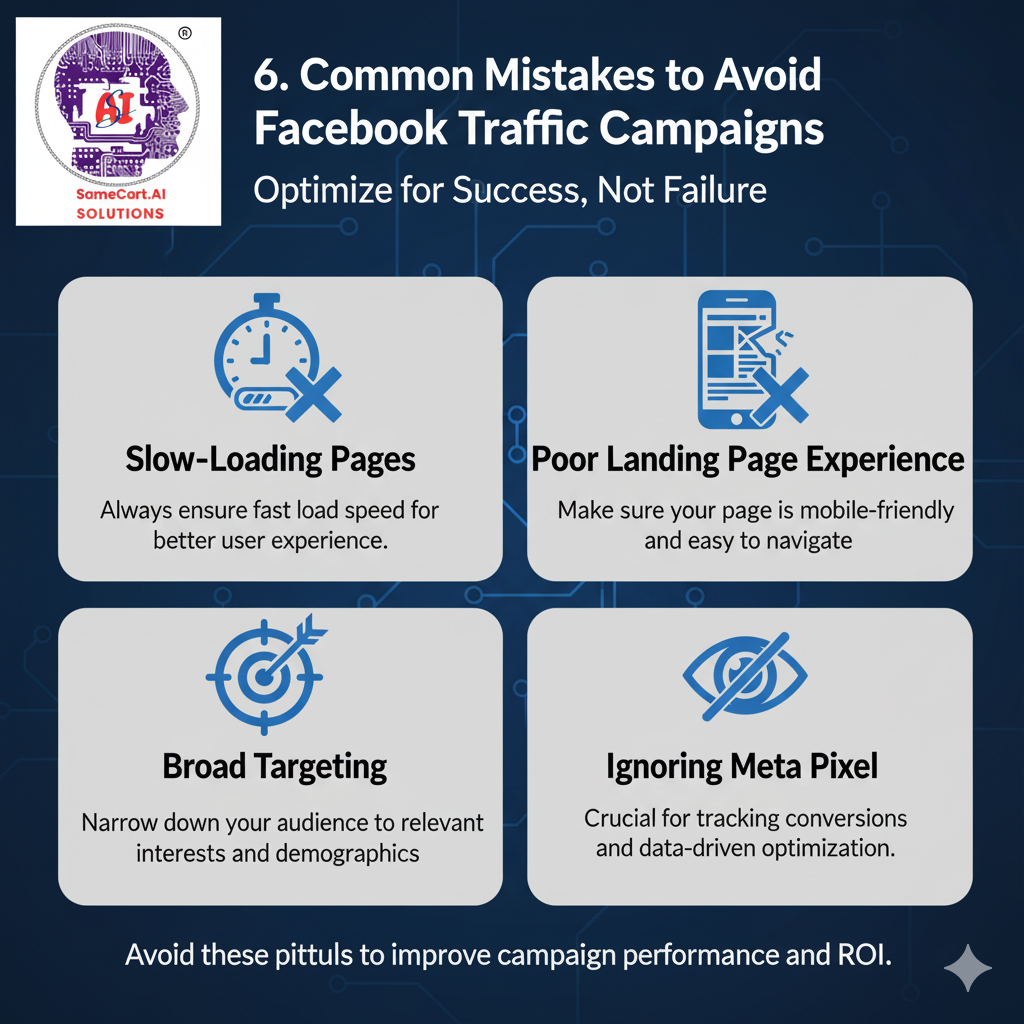
Many advertisers fail to get results because they overlook key factors. Avoid these mistakes:
- Sending traffic to slow-loading pages — always ensure fast load speed.
- Ignoring the landing page experience — make sure it’s mobile-friendly.
- Using broad targeting — narrow it down to relevant interests.
- Not tracking results with Meta Pixel — it’s crucial for data-driven optimization.
7. Tips to Optimize Facebook Traffic Campaigns
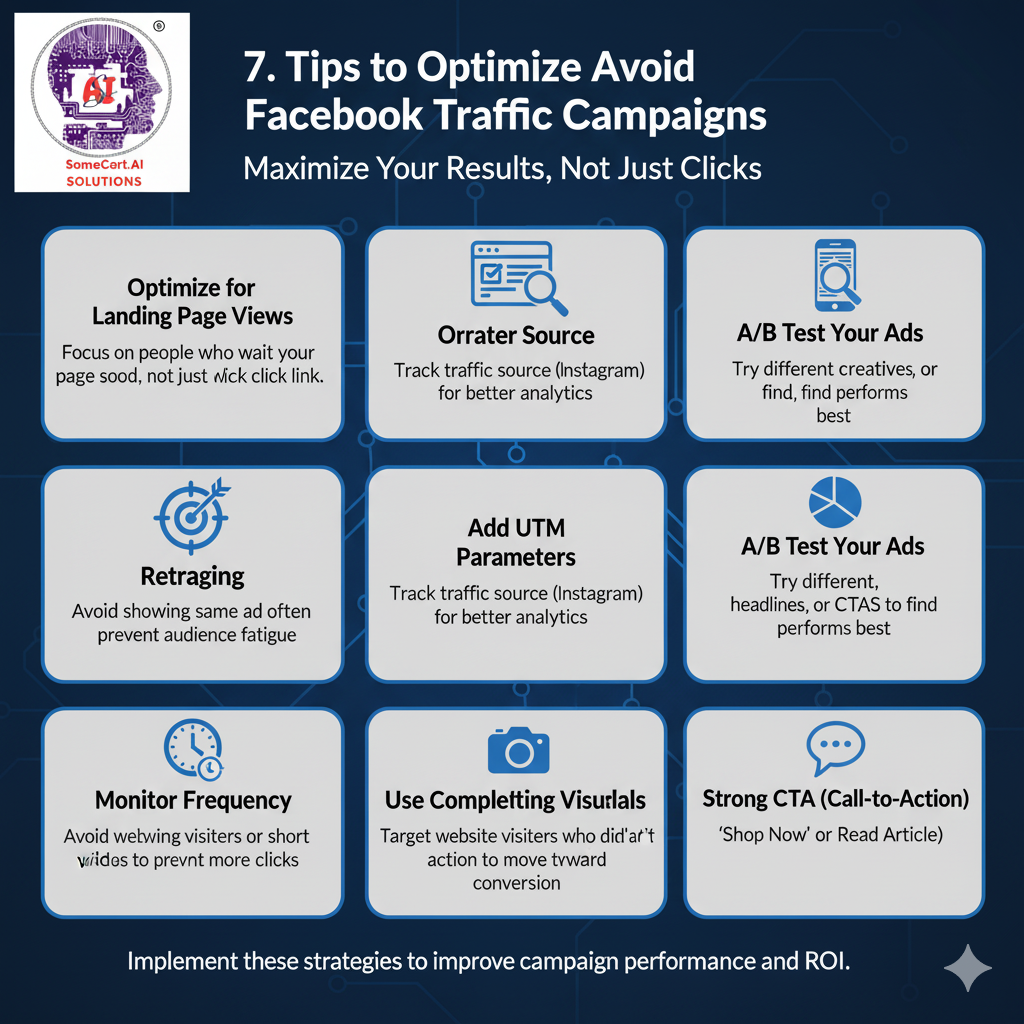
- Use Landing Page Views over Link Clicks:
This ensures your ad is optimized for people who wait for your page to load, not just click the link. - Add UTM Parameters:
Track where your traffic is coming from (Facebook, Instagram, etc.) for better analytics in Google Analytics. - A/B Test Your Ads:
Try different creatives, headlines, or CTAs to find what performs best. - Monitor Frequency:
Avoid showing the same ad too many times — it can cause audience fatigue. - Retarget Warm Audiences:
Create retargeting campaigns for those who visited your website but didn’t take action. - Use Compelling Visuals:
Eye-catching images or short videos attract more clicks than plain text ads.
Strong CTA (Call-to-Action):
Always end with a clear CTA such as “Learn More,” “Shop Now,” or “Read Article.”
Conclusion
A Facebook Traffic Campaign is one of the most effective strategies to increase visitors to your website, blog, or online store. It helps build brand awareness, nurture potential customers, and guide audiences toward future conversion campaigns.
By using samecart targeting, engaging visuals, and continuous optimization, Samecart can turn simple clicks into meaningful engagement. With the right strategy, traffic campaigns can significantly boost visibility, strengthen customer relationships, and drive consistent online growth.